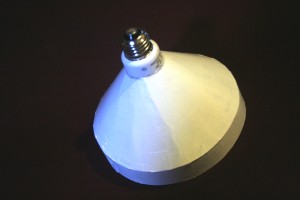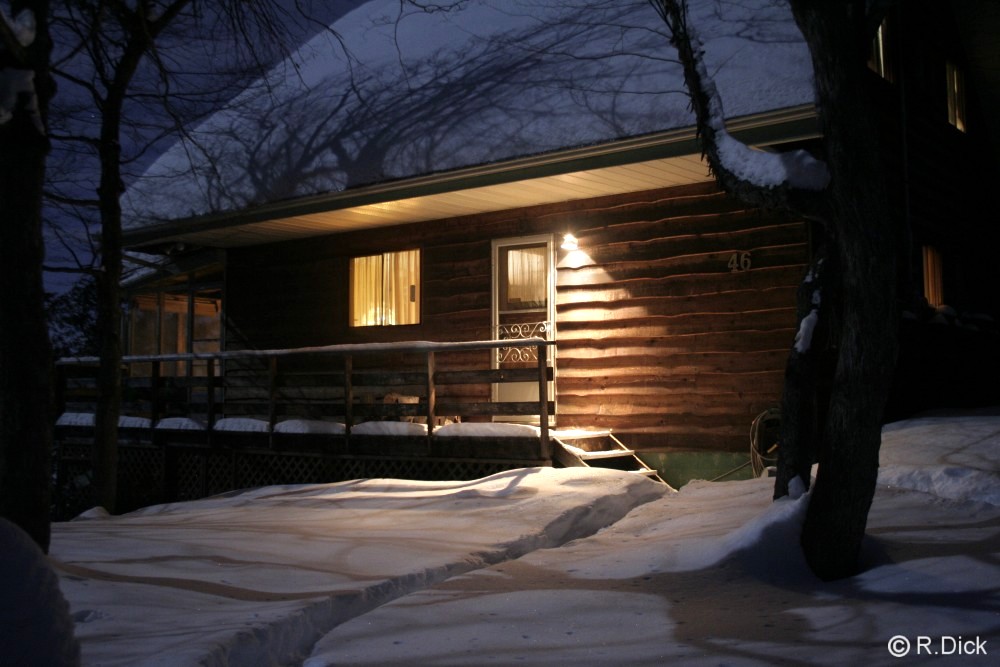 
Shield with CFL Bulb in Place. Illuminate the Steps for Safety.
(Picture shows a 15-watt incandescent bulb!)
As a homeowner, you can reduce light pollution AND increase the safety of your home! You may also save some of that precious electricity.
Here is a simple little shield your kids can make. All you need is some cardboard, a ruler and scissors and a bit of outdoor paint. It will reduce glare onto the street and help visitors see your doorsteps. You may have to help them a bit with the painting at the end.
The Project
This light shield will fit a standard 13 watt Compact Fluorescent (CF) or LED light bulb.
WARNING: Don't try this with higher wattage incandescent bulbs. They can get very hot and may burn the cardboard - or more!
The shield fits over the bulb and will shield the light, preventing any light from shinning above the horizon. The light that is shielded, is reflected down onto the ground. Therefore instead of creating glare and wasting light, it improved visibility allowing the use of a lower wattage bulb. Thus saving energy.
Cut out the "C" shaped paper pattern here. The central hole may be made smaller to accomodate smaller light bulbs.
Get a piece of cardboard 8.5 x 11 inch. If you are careful, you will be able to cut all the cardboard pieces from a single 8.5 x 11 inch piece of cardboard. You can use the paper pattern to cut out the stiffening form from the cardboard. Use the paper pattern (or the cut-out cardboard) to cut thick alluminium foil from a roll.
Tape the cardboard into a cone and tape the strip of cardboard around the bottom edge of the cone. (This will both stiffen the cone's lower edge, and it will help shield the light.) See the image to the left. It may help make these instructions more clear.
Paint the inside and outside surfaces to protect the shield from moisture. I initially lined the inside with aluminum foil, but it had little effect and painting was easier. Slide it over the plastic portion of the 13-watt CF bulb. Tape it in place.
We think you will be surprised at how much better these bulbs work when they are shielded.
You can probably think of many variations on this design. Send them in, and we will post them. If you would like to make one for a larger CF bulb, the small central mounting hole will have to be made a bit larger, and the lower strip may have to be longer.
Variations:
If your fixture points the light upward, don't bother cutting out the small hole in the centre. To keep the shield from blowing away, tie a few short strings between the lower lip of the shield and the bottom of the light fixture.
If your fixture holds your bulb horizontally, you will have to cut the side out of the cone and hold the shield in place with those strings again. Tape will also work, but most consumer tapes will quickly degrade in the weather. Then you may have a "flying saucer"!
|